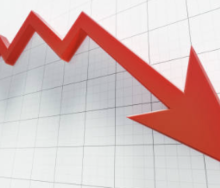Global trade in goods showed signs of a turnaround in the second quarter (Q2) of 2023, driven by strong automobile production and sales.
But further upward momentum in Q3 and beyond may be limited as long as export orders remain weak, the latest Goods Trade Barometer by the World Trade Organisation (WTO) has found.
The current reading of 99.1 for the barometer index, issued on August 24, is up from the previous reading of 95.6 from last May and is close to the baseline value of 100.
This suggests that merchandise trade volume turned up in Q2 after two quarters of decline, but that it remains slightly below trend.
Sustained recovery in Q3 and beyond is less than certain as long as the barometer's export orders component, based on purchasing managers' indices, remains weak.
The barometer is a composite leading indicator (CLI), providing real-time information on the trajectory of global merchandise trade relative to recent trends.
CLI values greater than 100 are associated with above-trend trade volumes while values less than 100 suggest that goods trade has either fallen below trend or will do so in the near future.
The volume of merchandise trade was down 1.0% year-on-year and 0.3% quarter-on-quarter in the first quarter of 2023, extending a downturn that began in the fourth quarter of 2022.
Several factors contributed to the slump, including high food and energy prices linked to the war in Ukraine, and tighter monetary policies aimed at fighting inflation in advanced economies.
Global import demand remains weak, weighed down by sluggish economic growth in leading economies, including the European Union and China, the WTO points out.
The current results are slightly weaker than the WTO's most recent trade forecast issued on April 5, which projected 1.7% growth in merchandise trade this year.
However, the organisation believes the target is still attainable if trade growth picks up in the second half of the year as expected.
Most of the barometer's component indices were slightly below current trends in their latest readings.
These include the export orders index (97.6), the container shipping index (99.5), the airfreight index (97.5), and the raw materials index (99.2).
The main exceptions were the automotive products index (110.8), which has climbed firmly above trend, and the electronic components index (91.5), which has fallen below the CLI 100 benchmark.
Surging exports of automotive products have contributed to stronger-than-expected GDP growth in Japan in the first half of 2023.
Vehicle exports have also been a rare source of strength for the Chinese economy, which has struggled to gain momentum in recent months.













